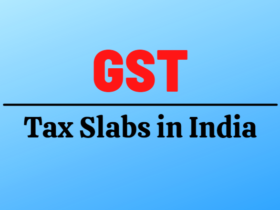How to calculate TDS on Salary? TDS is a medium of collecting Income Tax in India under the Indian Income Tax Act of 1961.
TDS applies to salaries, commissions, royalty payments, brokerage, contract payments, interest earned on many financial investments, income from lotteries, rental income, professional fees, etc.
Most organizations ask their salaried employees to send a declaration of their investment at the beginning of every financial year.
These investment declarations called for so that the tax deduction made accordingly.
Based on the statement of investment declaration. The employer will estimate the taxable income and start deducting tax on a monthly basis as a deduction tax at the source (TDS) before giving the monthly salary to the employee.
Which Income is categorized as ‘Salary’?
To calculate TDS for salary – it is mandatory to define which income comes under salary. Salary the type of payment received at a specific interval and by a specific amount to provide certain services according to a contract signed by two parties – the employer and the employee.
If there no relationship between two parties and employer and employee ‘related to the payment terms. Then the concept of salary does not work while the payment is given and income earned. Such cases called non-salary income.
Therefore, Some of these include Fees for technical or commercial services, payment to contractors and subcontractors, payment of dividends, interest earned on securities, interest earned on bank deposits.
Repurchase of units by Unit Trust of India or Mutual Funds Rewards from winning payments, lottery tickets, or crossword puzzles. Commissions and other profits on the sale of lottery tickets, payment of insurance commission, commission or brokerage, rent, and so on.
READ ALSO : TDS Rates Chart FY 2020-21 In India
Income Tax slabs on Salary
To calculate income tax on salary, the first thing to consider is the income tax slabs fixed by the Income Tax Department of India for the financial year.
For Individuals who are less than 60 years old (either men or women) :
- If Income is up to Rs. 250,000, there is no tax
- If Income is between Rs. 250,000 and Rs. 500,000 then Tax Rate is 5% (earlier 10%)
- If Income is between Rs. 500,000 and Rs. 10,00,000 then Tax Rate is 20%
- If Income is Above Rs. 10,00,000 then Tax Rate is 30%
For such persons, whose age between 60 – 80 years, and for payment of tax by Hindu Undivided Family (HUF), the initial bracket of exception is Rs. 300,000 for both men and women. The tax rate is the same as above for all other income slabs.
However, For those who are above 80 years of age, the tax exemption bracket is up to an income of Rs. 500,000 for men or women. And above that income level, rates are the same as before for all other categories.
For all the three categories in addition to appropriate taxes, the following also collected :
- A surcharge consisting of 10% of the Income Tax in case income is Rs. 50,000 lakhs and Rs. 1 Crore.
- A Surcharge consists of 15% of the Income Tax in case income is above Rs. 1 Crore.
- A Cess of 3% collected on the sum of Income Tax and Surcharge combined in such cases.
How to calculate TDS on Salary??
According to the government tax deduction, the exemption given under Section 80C and Section 80D of the Income Tax Act, 1961. This in turn allows a person to look at different types of investments for a particular financial year.
However, TDS on salary can be calculated by deducting the exemption from the total annual income specified by the Income Tax Department. In the case of tax exemption, the employer required to obtain a declaration and proof from the employees to approve the tax declaration.
One can consider the following categories for tax exemption.
- House Rent Allowance: An employee can declare HRA (House Rent Allowance) from the employer if he/she is paying towards accommodation as rent.
- Conveyance or Travel Allowance: In case if the employer provides you with such allowance, he/she can declare them for the tax declaration.
- Medical Allowance: In case the employer provides you with a medical allowance, he/she can declare and produce medical bills for tax exemption.
READ ALSO : What is TDS -Tax Deducted at Source
Method of TDS Calculation
When talking about tax calculation, the first thing in this context is that tax deductions and exceptions are available in Indian tax return references. Tax cuts and exemptions are both ways of reducing the tax burden and giving some benefits to the people.
Certain standard tax exemptions will be allowed by the Government of India. While calculating TDS for salary, these exemptions are deducted from the total annual salary as per the specification of the Income Tax Department of India.
Therefore, The tax then calculated on the non-exempt portion of the annual income. There are several provisions by the Income Tax Department of India about availing tax exemption.
Employees required to present those proofs of exemption to their employers with a declaration so that TDS can be calculated properly. The employer is responsible for calculating TDS based on evidence and declaration, deducting taxes from salary, and depositing it with the authority.
How is TDS deducted?
Both income and expenditure like salary, lottery, interest from banks, rent payment, payment of commission and payment to freelancers, etc. fall under the TDS limit.
Therefore, when payment made under these clauses, a percentage of the overall payment withdrawn by the paying source. This source can be an individual or an organization, known as a ‘Deductor’. And the person whose payment being deducted called Deductee.
Note: Under the laws stated by the government, any payment from one party to another will be subject to TDS complying with the provisions of the Income Tax Act, 1961. Here, the tax will be deducted at the source and deposited. Income tax department.
Section 80C
Under Section 80C, an employee can pay a maximum of Rs. 1,50,000 for tax exemption. In addition, the following investment schemes can be considered for exemption under 80C.
- Fixed deposit scheme for a period of minimum 5 years
- Life insurance Premium paid
- Interest earned through a few of the National Savings Certificates are eligible for a certain amount of tax
- Investment in mutual funds and equity shares, such as ULIP, Linked Saving Scheme of a Mutual Fund/UTI
- Payments towards subscription for National Saving Certificates and Home Loan Account Scheme
- Contribution to statutory PF, 15 years P.P.F., and superannuation funds
Section 80CCG
If the employee has invested under certain equity savings schemes, he is eligible for a maximum exemption of Rs. 25,000 annually. However, the plan must invest for at least 3 years from the date of acquisition.
Section 80D
However, This section provides an exemption for premiums paid for medical insurance. In addition, the exemption extended to your dependents and parents.
READ ALSO : What is an Income Tax Refund?
Items Eligible for TDS Exemption
Deduction of allowances under Section 10A of IT Act
- HRA – If the employee lives in a rented facility and paying rent towards the accommodation, he will allow deducting the house rent allowance. Maximum Rs. 180,000 can deduct from tax annually as allowance for House Rent (HRA).
- Transport Allowance – The employer pays the employees to cover the expenses of commuting to and from work. The annual deduction in this category is a maximum of Rs. 19,200 Rs.
- Savings under Section 80Cof IT Act – A full range of savings and investment options are available under this section from which to choose and it is currently one of the most popular tax saving options. The total tax deduction under 80C is a maximum of Rs. 150,000 invested in a single or a combination of devices. Some of the 80C devices include:
- Public Provident Fund
- Contribution to Employers’ Provident Fund
- Premiums paid on Policy of Life Insurance
- Equity-Linked Saving Schemes (ELSS) – these are the Mutual Funds available for tax saving
- Bank Fixed Deposits – Of certain duration
- National Savings Certificates – issued by post offices
- Repayment of the Principal amount for your Home Loan
- The TDS under section 80CCC and 80CCD- comes under 80CCC for contribution to some annuity plan of any insurance company for getting pension, while 80CCD is for a contribution towards Central Government’s National Pension Scheme (NPS).
However, the Cumulative total for Sections 80C, 80CCC, and 80CCD cannot go beyond Rs. 200,000 i.e. Rs. 1.5 lakhs plus an additional Rs. 50,000 is tax-deductible for NPS contribution. How to calculate TDS on Salary?
- TDS under Section 80TTA up to Rs. 10,000 per annum tax-deductible on the interest earned in the bank’s savings account.
- TDS under section 80D- This section deals with a tax deduction for medical expenses and on payment of medical insurance.
- Medical Allowance – Employees can declare medical allowance by producing medical bills for tax exemption.
- The premium for purchasing medical insurance for self, spouse, and dependent children – this savings is Rs. can happen till. 25000 for resident taxpayers under the age of 60 and Rs. 50,000 for senior citizens from FY 2018-19.
- TDS under Sections 80U and 80DD- These sections deal with deduction in case of physical disability of the taxpayer and their dependent (s) respectively. Depending on the extent of disability, deduction ranging from Rs. 75,000 to Rs. 125,000 per year.
- TDS under Section 80DDB- It applicable for the expenses incurred in the treatment of certain specified diseases. At this deduction, Rs. 40,000 annually, even if the cost of treatment exceeds these, if Rs. Be less than. 40000. How to calculate TDS on Salary?
READ ALSO : What are Income Tax Slabs in India?
READ ALSO : How to file Income Tax Returns online









